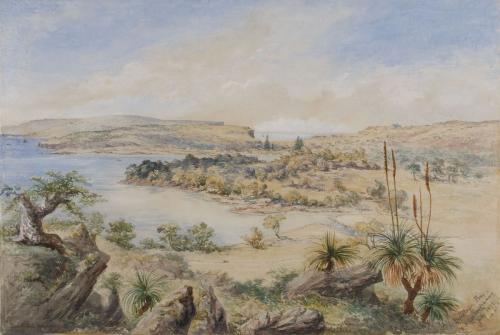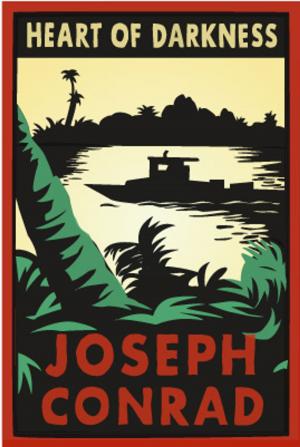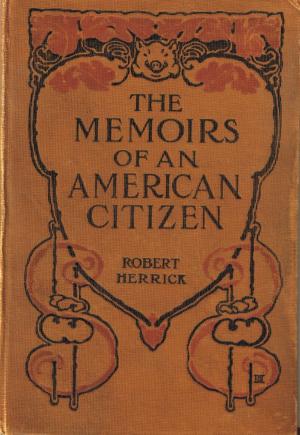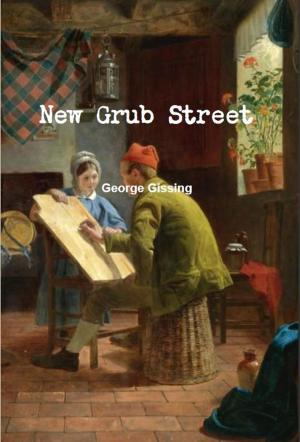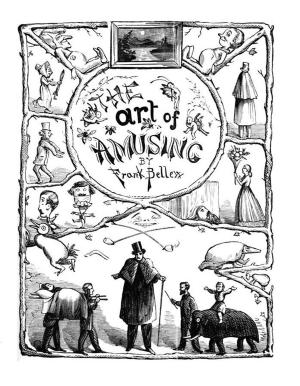| Author: | C. F. Gordon-Cumming | ISBN: | 1230000112156 |
| Publisher: | AP Publishing House | Publication: | March 4, 2013 |
| Imprint: | Language: | English |
| Author: | C. F. Gordon-Cumming |
| ISBN: | 1230000112156 |
| Publisher: | AP Publishing House |
| Publication: | March 4, 2013 |
| Imprint: | |
| Language: | English |
A Lady’s Cruise in a French Man-of-War was published in 1872 and recounts the south sea voyages of Constance Frederica Gordon-Cumming. The journey was at the bequest of the Bishop of Samoa who was interested in seeing his widespread parsonage. The book was originally planned to be in two volumes, the first which published on the date given and the second lost to time and publication.
In spring of 1875, after Sir Arthur Hamilton Gordon becomes the first governor of Fiji, C.F. Gordon-Cumming, a British woman, accepts an invitation to travel to Fiji as part of Lady Gordon’s party. Told from her own viewpoint, Gordon-Cumming writes about her time spent in Fiji where she falls in love with the isles. At the end of two years, Monseigneur Elloi, the Roman Catholic Bishop of Samoa, invites Gordon-Cumming on a mission to visit parts of his diocese located in more than half of the South Seas. She delightedly accepts this unique and exceptional opportunity and prepares for the cruise of a lifetime. Written in a series of journalistic letters to Lady Gordon, Elisa, and her sister, Nell, Gordon-Cumming writes about her experiences on the cruise in a French man-of-war, the Seignelay.
Accompanying Gordon-Cumming on the cruise are Monseigneur Elloi, the Bishop of Samoa; Captain Aube; M. de Gironde, the host of the Seignelay; Sister Anna; Soeur (Sister) Marie des Anges; Soeur Marie des Cinq Plaies; Soeur Marie-Jesu; M. Pinart, another guest; and the officers of the French man-of-war. In her letters, Gordon-Cumming remarks on the cordiality of all the clergy, officers, and guests. M. de Gironde provides Gordon-Cumming with a comfortable trip surrounded by friendly passengers, officers, and plenty of food. He even allows her to stay in his cabin, which is furnished with a bookcase, while he stays in the chart-room.
As the Seignelay reaches its first stop at Tonga, which is known as the Friendly Isles, the Sisters ask Gordon-Cumming to stay with them while the French man-of-war is in harbor. Gordon-Cumming becomes acquainted with convent life while in Maofanga, a village in Tonga. She explores the peaceful scenery of Tonga and catches a glimpse of King George’s house as King George is expecting a visit from Captain Aube and Monseigneur Elloi. Gordon-Cumming, M. Pinart, and M. Berryer discover the Wesleyan church and its history of a commander of an English man-of-war forty years ago as well as the missionaries who came to the South Pacific in 1799. With 125 chapels and an average attendance of 19,000 people, the Wesleyan Mission thrives in the South Seas. Gordon-Cumming also notes and laments European influences, such as dress and hairstyles, on Tonga. Similar to a current day anthropologist, Gordon-Cumming notes these cultural changes throughout her cruise on the South Seas. She then travels to Mua, the main Roman Catholic station, with Monseigneur Elloi, his party, and Tongan students. M. Pinart leads the group to visit the tombs of Toui-Tongas, the former kings of Tonga, and Gordon-Cumming becomes wrapped up in the mysterious creation of the tombs as well as the pyramids.
After experiencing convent life and the history and mysteries of Tonga, Gordon-Cumming and the mission sail to Vavau. The Wesleyan Mission also has a large presence in Vavau. Life in Vavau is different from Gordon-Cumming’s expectations as the nearest doctor is 2,000 miles away. Tensions rise as she and the local reverend try to help an ill young woman who recently gave birth to her first child. Gordon-Cumming also takes advantage of Vavau’s culture by enjoying oranges, sketching the beautiful scenery, riding side-saddle, and visiting a cave. She is most enthralled by the cave’s tale of love and scandal.
Samoa, made up of eight main isles and numerous islets, is the next stop on the cruise. Gordon-Cumming visits the village and is even invited inside numerous homes which differ greatly from those in Tonga and Fiji. She is surprised to find the same hair styles in Samoa as in London. One of the highlights is the House of Debate where Gordon-Cumming is impressed with exuberant speakers and attentive listeners. She passes by a mysterious and abandoned European house from the Presbyterian Mission as well. The most important part of the stop at Samoa is the council of war to decide the best way to stop the rebels. Opinions clash as most of the chiefs of Tutuila support war, but the Bishop’s speech is in favor of peace. Gordon-Cumming learns the fascinating history of the kings of Samoa. She is also able to compare Samoan culture to those of surrounding lands. They visit Apia, the capital of Samoa, which is known for its harbor. The fighting continues here and the plot picks up as it becomes dangerous for refugees and mission workers to step outside sanctioned areas. Gordon-Cumming even learns the fate of notorious pirate “Bully” Hayes. An anti-Christian firm counters the mission as it refuses to speak with members of the mission. Discord strikes again as Captain Aube mistakenly gives consent to help the American consul search for Captain Wright.
Conversely, Gordon-Cumming and the others partake in FaSamoa, a picnic in honor of the visitors. After enjoying pigs, pigeons, prawns, and cocoa-palm at the picnic, Gordon-Cumming and M. Pinart visit Malua, the college of the London Mission. Dr. G.A. Turner, the head of the mission, gives them a tour of the college. As the founder of Malua, Dr. Turner educates them on the absorbing history of the college which was started due to a lack of trained teachers. Gordon-Cumming discovers the noteworthy progress the college has made since its start in 1844. In her letters, she records the daily life and future of a student at Malua and remarks on the differences of this college compared to a European institution. The villages of Malua house a student and his family, allowing the college to educate men, women, and children. Partiality is given to married men because their wives have the opportunity to teach other wives and their daughters. After learning the history and current state of Malua, Gordon-Cumming reveals the tough beginning of Dr. Turner’s mission career. Dr. Turner’s calling started after a reverend was murdered in 1839. He and his wife took on the dangerous task of ending cannibalism in the New Hebrides. Struggles mounted as language barriers of the New Hebrides became apparent as each island spoke its own dialect. Dr. Turner and the rest of the small mission also had to escape life-threatening sicknesses and perilous rebellions. After learning the rough start of the missions in the South Seas, Gordon-Cumming more deeply appreciates the work of the Wesleyan Mission and the transformations in Melanesia, Polynesia, Tahiti, Raiatea, and Tonga.
In addition to the Wesleyan Mission, the London Mission began work in the South Seas around 1817. Rev. John Williams led the London Mission, starting work in Raiatea, then continuing to the Hervey Isles and Aitutaki. He succeeded in the first year, but his biggest challenge presented itself in Mangaia, part of the Hervey Isles, where attempt after attempt was crushed. Alternately, Rev. Williams achieved his best work in the isles of Atiu, Mauke, and Mitiaro. In her letters, Gordon-Cumming discloses the extraordinary revolution that took place in one day over three isles. While learning about the revolution, Gordon-Cumming also gains knowledge of the first missionary work of the Hervey Isles. Because he had no access to transportation other than canoes, Rev. Williams built his own vessel although he had little knowledge of the trade. After numerous problems and challenges, Rev. Williams succeeded in building the Messenger of Peace which sailed in Tahiti, Marquesas, the Hervey Isles, and several other isles. Gordon-Cumming reveals the future of Rev. Williams, other reverends, and the Wesleyan and London Missions in her writing.
A Lady’s Cruise in a French Man-of-War was published in 1872 and recounts the south sea voyages of Constance Frederica Gordon-Cumming. The journey was at the bequest of the Bishop of Samoa who was interested in seeing his widespread parsonage. The book was originally planned to be in two volumes, the first which published on the date given and the second lost to time and publication.
In spring of 1875, after Sir Arthur Hamilton Gordon becomes the first governor of Fiji, C.F. Gordon-Cumming, a British woman, accepts an invitation to travel to Fiji as part of Lady Gordon’s party. Told from her own viewpoint, Gordon-Cumming writes about her time spent in Fiji where she falls in love with the isles. At the end of two years, Monseigneur Elloi, the Roman Catholic Bishop of Samoa, invites Gordon-Cumming on a mission to visit parts of his diocese located in more than half of the South Seas. She delightedly accepts this unique and exceptional opportunity and prepares for the cruise of a lifetime. Written in a series of journalistic letters to Lady Gordon, Elisa, and her sister, Nell, Gordon-Cumming writes about her experiences on the cruise in a French man-of-war, the Seignelay.
Accompanying Gordon-Cumming on the cruise are Monseigneur Elloi, the Bishop of Samoa; Captain Aube; M. de Gironde, the host of the Seignelay; Sister Anna; Soeur (Sister) Marie des Anges; Soeur Marie des Cinq Plaies; Soeur Marie-Jesu; M. Pinart, another guest; and the officers of the French man-of-war. In her letters, Gordon-Cumming remarks on the cordiality of all the clergy, officers, and guests. M. de Gironde provides Gordon-Cumming with a comfortable trip surrounded by friendly passengers, officers, and plenty of food. He even allows her to stay in his cabin, which is furnished with a bookcase, while he stays in the chart-room.
As the Seignelay reaches its first stop at Tonga, which is known as the Friendly Isles, the Sisters ask Gordon-Cumming to stay with them while the French man-of-war is in harbor. Gordon-Cumming becomes acquainted with convent life while in Maofanga, a village in Tonga. She explores the peaceful scenery of Tonga and catches a glimpse of King George’s house as King George is expecting a visit from Captain Aube and Monseigneur Elloi. Gordon-Cumming, M. Pinart, and M. Berryer discover the Wesleyan church and its history of a commander of an English man-of-war forty years ago as well as the missionaries who came to the South Pacific in 1799. With 125 chapels and an average attendance of 19,000 people, the Wesleyan Mission thrives in the South Seas. Gordon-Cumming also notes and laments European influences, such as dress and hairstyles, on Tonga. Similar to a current day anthropologist, Gordon-Cumming notes these cultural changes throughout her cruise on the South Seas. She then travels to Mua, the main Roman Catholic station, with Monseigneur Elloi, his party, and Tongan students. M. Pinart leads the group to visit the tombs of Toui-Tongas, the former kings of Tonga, and Gordon-Cumming becomes wrapped up in the mysterious creation of the tombs as well as the pyramids.
After experiencing convent life and the history and mysteries of Tonga, Gordon-Cumming and the mission sail to Vavau. The Wesleyan Mission also has a large presence in Vavau. Life in Vavau is different from Gordon-Cumming’s expectations as the nearest doctor is 2,000 miles away. Tensions rise as she and the local reverend try to help an ill young woman who recently gave birth to her first child. Gordon-Cumming also takes advantage of Vavau’s culture by enjoying oranges, sketching the beautiful scenery, riding side-saddle, and visiting a cave. She is most enthralled by the cave’s tale of love and scandal.
Samoa, made up of eight main isles and numerous islets, is the next stop on the cruise. Gordon-Cumming visits the village and is even invited inside numerous homes which differ greatly from those in Tonga and Fiji. She is surprised to find the same hair styles in Samoa as in London. One of the highlights is the House of Debate where Gordon-Cumming is impressed with exuberant speakers and attentive listeners. She passes by a mysterious and abandoned European house from the Presbyterian Mission as well. The most important part of the stop at Samoa is the council of war to decide the best way to stop the rebels. Opinions clash as most of the chiefs of Tutuila support war, but the Bishop’s speech is in favor of peace. Gordon-Cumming learns the fascinating history of the kings of Samoa. She is also able to compare Samoan culture to those of surrounding lands. They visit Apia, the capital of Samoa, which is known for its harbor. The fighting continues here and the plot picks up as it becomes dangerous for refugees and mission workers to step outside sanctioned areas. Gordon-Cumming even learns the fate of notorious pirate “Bully” Hayes. An anti-Christian firm counters the mission as it refuses to speak with members of the mission. Discord strikes again as Captain Aube mistakenly gives consent to help the American consul search for Captain Wright.
Conversely, Gordon-Cumming and the others partake in FaSamoa, a picnic in honor of the visitors. After enjoying pigs, pigeons, prawns, and cocoa-palm at the picnic, Gordon-Cumming and M. Pinart visit Malua, the college of the London Mission. Dr. G.A. Turner, the head of the mission, gives them a tour of the college. As the founder of Malua, Dr. Turner educates them on the absorbing history of the college which was started due to a lack of trained teachers. Gordon-Cumming discovers the noteworthy progress the college has made since its start in 1844. In her letters, she records the daily life and future of a student at Malua and remarks on the differences of this college compared to a European institution. The villages of Malua house a student and his family, allowing the college to educate men, women, and children. Partiality is given to married men because their wives have the opportunity to teach other wives and their daughters. After learning the history and current state of Malua, Gordon-Cumming reveals the tough beginning of Dr. Turner’s mission career. Dr. Turner’s calling started after a reverend was murdered in 1839. He and his wife took on the dangerous task of ending cannibalism in the New Hebrides. Struggles mounted as language barriers of the New Hebrides became apparent as each island spoke its own dialect. Dr. Turner and the rest of the small mission also had to escape life-threatening sicknesses and perilous rebellions. After learning the rough start of the missions in the South Seas, Gordon-Cumming more deeply appreciates the work of the Wesleyan Mission and the transformations in Melanesia, Polynesia, Tahiti, Raiatea, and Tonga.
In addition to the Wesleyan Mission, the London Mission began work in the South Seas around 1817. Rev. John Williams led the London Mission, starting work in Raiatea, then continuing to the Hervey Isles and Aitutaki. He succeeded in the first year, but his biggest challenge presented itself in Mangaia, part of the Hervey Isles, where attempt after attempt was crushed. Alternately, Rev. Williams achieved his best work in the isles of Atiu, Mauke, and Mitiaro. In her letters, Gordon-Cumming discloses the extraordinary revolution that took place in one day over three isles. While learning about the revolution, Gordon-Cumming also gains knowledge of the first missionary work of the Hervey Isles. Because he had no access to transportation other than canoes, Rev. Williams built his own vessel although he had little knowledge of the trade. After numerous problems and challenges, Rev. Williams succeeded in building the Messenger of Peace which sailed in Tahiti, Marquesas, the Hervey Isles, and several other isles. Gordon-Cumming reveals the future of Rev. Williams, other reverends, and the Wesleyan and London Missions in her writing.
